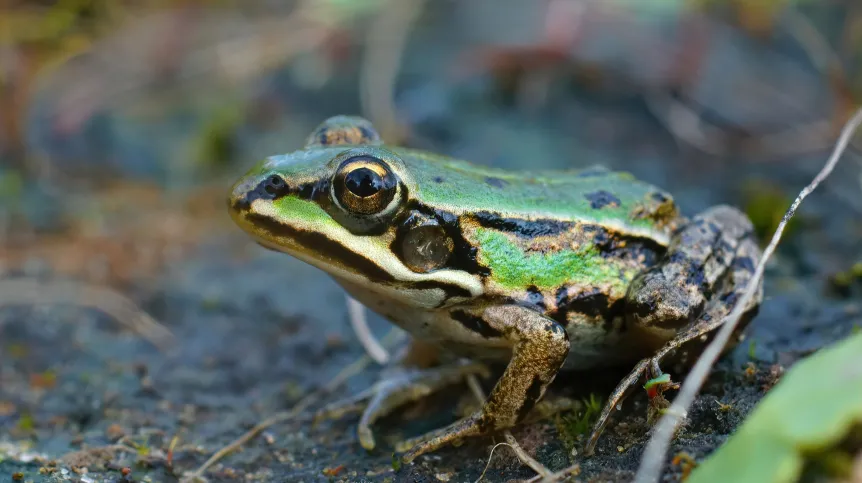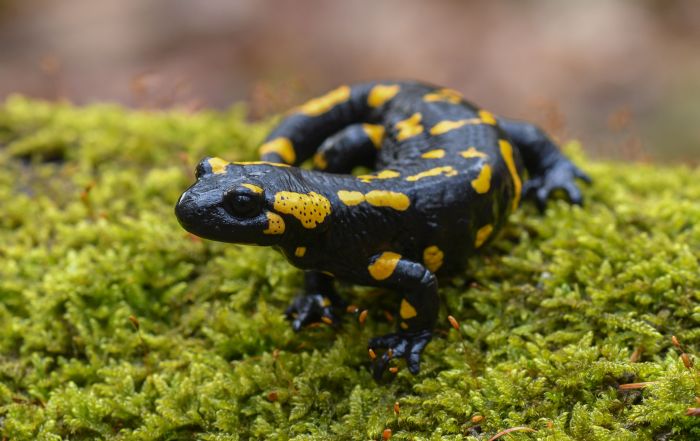
Due to climate change, there are fewer and fewer amphibians in the world. Salamanders are facing extinction - two out of five will die, and the disastrous statistics may be worsened by a new disease emerging in the United States and Europe, says a study conducted by over 100 scientists, including researchers from the University of Łódź.
The analysis of global data from the last two decades has shown that climate change threatens not only salamanders, but also frogs and caecilians. Habitat destruction and disease make amphibians some of the most endangered animals on the planet. An international group of experts was looking for effective measures to protect amphibians around the world. They identified the protection and restoration of forests as a key measure.
Professor Philippe J.R. Kok from the University of Łódź was among the researchers who investigated threats to amphibians, population trends and ranges in the Guyana Shield - in Pantepui. The representative of the Łódź university was the Regional Chair of the IUCN SSC Amphibian Specialist Group for the Guiana Shield. The research results were published in Nature, in the report 'Ongoing declines for the world’s amphibians in the face of emerging threats'.
The report has evaluated the extinction risk of more than 8,000 amphibian species from around the world, including 2,286 species evaluated for the first time. Between 2004 and 2022, several critical threats have pushed more than 300 amphibians closer to extinction. Climate change was the main threat to 39% of these species. According to the report, nearly 41% of all amphibian species worldwide that have been assessed are now threatened to some degree: critically endangered, endangered or vulnerable. This is compared to 26.5% of mammals, 21.4% of reptiles and 12.9% of birds. Additional data will soon be published on the IUCN Red List of Threatened Species.
As reported by Professor Kok in the University of Lodz press release, the fire salamander (Salamandra salamandra), which is found in southern Poland, is not currently endangered, mainly because it has a large distribution range. However, many populations are declining due to factors such as emerging diseases (for example, Batrachochytrium salamandrivorans, a fungal pathogen), residential development and habitat destruction, introduction of predatory fish (salamander larvae develop in the water and fish feed on them), agriculture and pollution with agrochemicals.
Scientists explain that amphibians are extremely sensitive to changes in their environment. They are unable to move very far to escape the climate change-induced increase in frequency and intensity of extreme heat, wildfires, drought and hurricanes. According to the document, habitat destruction and degradation occurs as a result of agriculture (including crops, livestock like cattle and livestock grazing, and silviculture), infrastructure development and other industries. Experts recommend expanded habitat and corridor protection in the places most important for biodiversity.

The decline in amphibian numbers is also caused by diseases from the chytrid fungus, which has already decimated amphibian species in Latin America, Australia and the United States. According to the press release, in 2022, Professor Kok and colleagues reported the presence of the fungal pathogen Batrachochytrium dendrobatidis in Pantepui for the first time and showed that even limited human infrastructure that only allows foot-traffic was a significant risk factor for disease introduction in isolated ecosystems (publication on this topic is available here).
North America is home to the most biodiverse community of salamanders in the world, including a group of lungless salamanders abundant in the Appalachian Mountains of the eastern United States. For this reason, conservationists fear that a deadly salamander disease found in Asia and Europe, called Batrachochytrium salamandrivorans (Bsal), will make its way to the Americas. Experts indicate that biosecurity practices should cover both wild and captive amphibians.
Species that have become extinct since 2004 include the Chiriquí harlequin toad (Atelopus chiriquiensis) from Costa Rica and the sharp snouted day frog (Taudactylus acutirostris) from Australia, and two species from Guatemala: Craugastor myllomyllon and the Jalpa false brook salamander (Pseudoeurycea exspectata). More than 160 critically endangered amphibians are considered likely to be extinct. The assessment has also found that 120 species have improved their Red List status since 1980 as a direct result of conservation measures, the majority due to habitat protection and management.
The authors of the report add that the list of reasons to protect amphibians includes their role in medicine, pest control, alerting us to environmental conditions and making the planet more beautiful. (PAP)
PAP - Science in Poland
kol/ bar/ kap/
tr. RL













